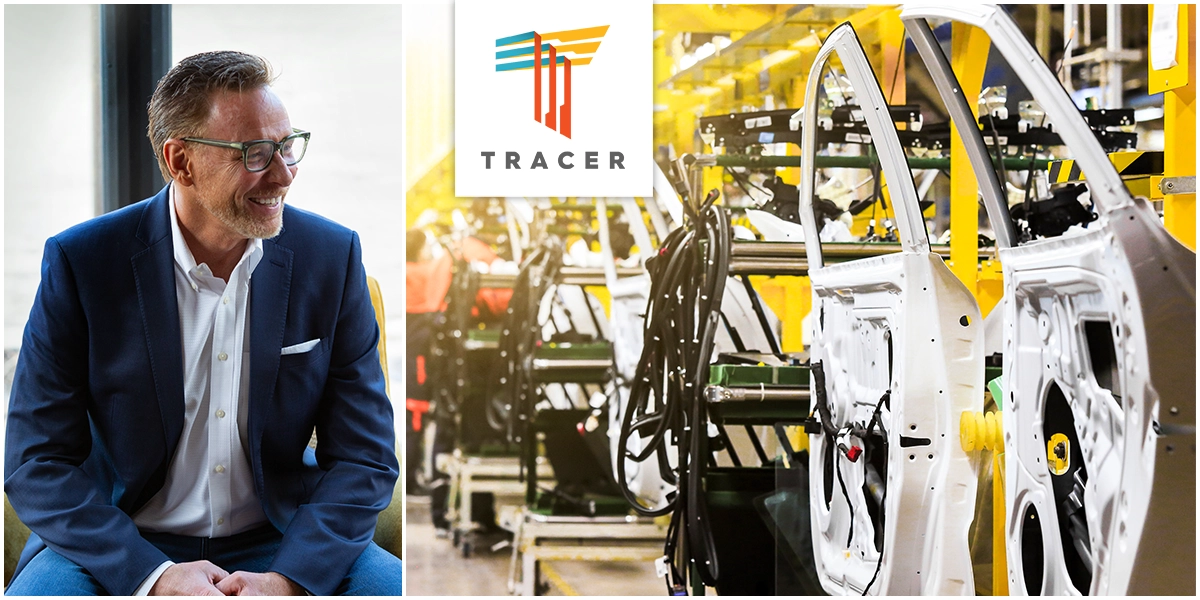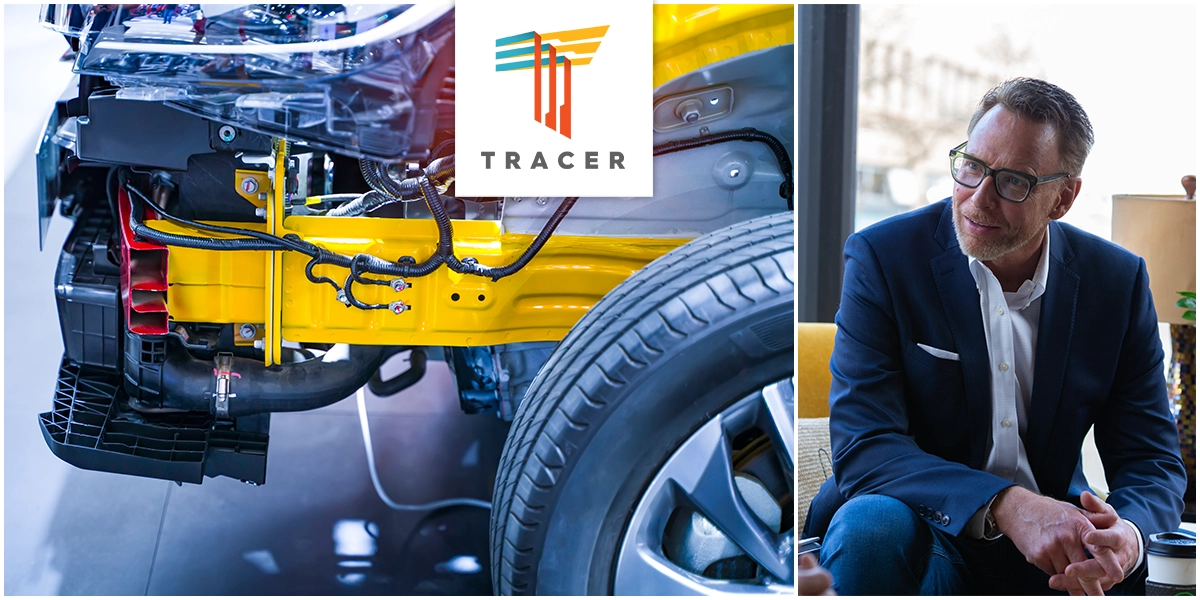In Part One of our interview, Tweddle Group’s Ryan Pike recounted the origins of TRACER™, a groundbreaking diagnostic platform. He also discussed the early impact of TRACER on OEM assembly lines.
In our second installment, Ryan explains how TRACER interacts with technicians on the floor, what it can (and cannot) do and the key to successful implementation.
For somebody who isn’t familiar, what exactly does TRACER do?
Ryan Pike: Right. Simply, TRACER gives you a pictorial map with a high probability of where you should go to locate—and then correct—the root cause of a complex electronics problem.
That is to say, TRACER really comes to life when the technician confronts a cluster of Diagnostic Trouble Codes, or DTCs, which may be seemingly unrelated, and have no real clear or apparent hierarchy.
TRACER can assess the situation and say, “fix this, and you’ll likely resolve all these other trouble codes.”
And it can do so with remarkable accuracy.
Got it. What doesn’t it do?
It won’t tell you if you have the wrong version of the software flashed onto the vehicle’s electronics module. That’s a good example of the sort of boundaries that may exist.
It will tell you the electronics system is seeing specific issues. It will tell you which module is related to those issues, and it will tell you there’s a problem with the software on that module.
But it can’t tell you, “Hey, V1 is installed, and you need to install V2.”
It’ll say, “There’s a problem with this module.”
TRACER essentially creates a visual map of an electronics fault.
And if a technician is paying attention, or if they’ve seen this before, will that information be enough to help them identify the software issue?
Yes. Absolutely.
A human being will observe those readings and quickly realize they’re looking at a software problem. From there it’s a pretty short journey to say, “Oh, we still have the old software installed.” Update the software, solve the issue.
“You want to prevent problems from being built into your vehicles.”
How did the OEMs respond to TRACER once you had it, and you could demonstrate what it did?
Well, right away we all understood TRACER’s primary impact would be on the factory assembly line. That’s a really critical juncture in the product life cycle. You want to prevent problems from being built into your vehicles. Let’s say you miss a connection. Then you cover that connection with carpet. Then you install a seat over the carpet.
When you run the vehicle out for End of Line testing you find out you have a failure in the seat movement, but no one has any idea the original connection issue is in there.
Now they have to rip the seat out, they have to rip the carpet out, they have to send the whole vehicle to the repair bay.
TRACER can spot those issues in the “first-time-through” output. A problem like that flashes up on the screen before the vehicle ever goes to the next station.
How has that impacted the repair bay itself?
Well, now that they have TRACER up and down the assembly line, they have the ability to move some of their repair technicians out onto the production line or even into different roles or functional departments.
If there’s a problem with a loose connector they have a roaming technician. They just flag him down and he walks up and fixes it. Issues never even make it to the next assembly cell and vehicle throughput increases dramatically. Some of the technicians now spend a percentage of their time out on the line as roving repairmen.
The return on investment is dramatic because they’re saving shots on goal. They’re eliminating vehicles that come off the production line with issues that need repair.

So, it’s just a matter of redistributing technicians throughout the operation.
Absolutely.
Obviously, with the number of available skilled technicians decreasing overall there’s a need to balance that out somewhere. You’ve got fewer qualified technicians, the pool is shrinking, so you need to support the ones that you still have in a more advanced way.
Exactly. And I think the knock-on effect is more resource movement within these plants.
It’s no longer, “That’s your station and you’ll be there for the next three years of your life.”
Now you’ve got new people in the repair bays, you’ve got 2nd shift folks who aren’t necessarily repair folks but they’re repairing vehicles because TRACER makes it a whole lot easier.
A good example was when one of our new Product Development folks first came on. He wanted to visit a plant, so I took him into one of our long-time client plants.
He met one of the plant folks coming off first shift and asked him how TRACER had impacted his life as a repair specialist.
The guy said, “Oh, I’m not a repair specialist. I’m not a technician at all. I’ve just been assigned to look at these ten trucks sitting here. There’s a problem and I’ve been asked to use TRACER to find the issue and fix it.”
It almost looked like we had set the question up, you know what I mean?
The guy said, “In a normal scenario I wouldn’t even know what to do. I don’t even fix my own vehicles at home.” He said, “I’m just looking at the TRACER picture and going and fixing it based upon the information TRACER’s giving me.”
Wow.
Remarkable, right? The guy said, “Tomorrow, I’m going back to the assembly line. That’s my real job.”
TRACER takes people that aren’t otherwise exceptionally technical and positions them to pick up the slack. And this is critical overflow. The plant can juggle resources more effectively to better maintain throughput.
It’s not Tweddle Group’s position to suggest eliminating technicians, but it allows a more transient workforce, one that moves more flexibly in and out of repair bays. In and out of troubleshooting. If your quarantine yard has 500 vehicles sitting there, which is not uncommon in a new vehicle launch, you don’t have to wait for your electronics technician to figure out what’s going on. You simply deploy TRACER and non-technical employees can efficiently diagnose very-technical issues.
“TRACER looks at the VIN. It knows you have this specific module for this electronics system And it knows what to do with that information.”
Would you say it makes the whole thing more agile? And does this allow companies to focus on increasing the number of cars moving out the door?
Yes, that’s exactly it.
So far, we’ve focused on the factory. What are some of the other environments or applications where TRACER makes a difference?
The next foray would be dealership diagnostics.
Because by the time we have the data come off the production line, we’ve ingested all its electronics DNA, so to speak, into TRACER.
We hold that in a repository on the client’s behalf.
So, it’s easy to picture the day when, for example, you could scan a specific vehicle from 2019 forward and instantly pull up TRACER in the repair bay at a dealership and see what you need to know.
So, there’s all this data sitting in the repository that can be used in dealership service. And that could transform dealership repair in much the same way it’s transformed the factory. We are also beginning to utilize the power of the data set to study the correlation between factories that use TRACER and those that do not, and the impact it has on quality within the warranty period of the vehicle with dealerships. The ultimate goal of TRACER’s diagnostics is to reduce the number of electrical issues that consumers have after they purchase the vehicle.

TRACER really was first to market in many respects but in 2024 there are a lot of diagnostic tools on the market. What makes TRACER unique from its competitor equivalents?
I’ll be honest, we’ve got our ear to the ground, and we’re pretty tight with that market, and I can’t name a single tool doing what TRACER does in its entirety.
TRACER looks at the specific Vehicle Identification Number, the VIN. It says, “You have this specific module for the electronics system, for your navigation system in this vehicle.” And it knows precisely what to do with that exact information.
So, we know what options were installed in that vehicle. We know which harnesses were installed. We know where the connections are. TRACER then builds a simple visual image for the Technician and the job of the repair professionals becomes much more efficient and greatly reduces time to repair.
So, it’s a significant difference?
I’d say so. It alleviates that phenomenon where you open a generalized service manual and it says, “If equipped” or “If this is installed, then…”, which creates a whole additional layer of irritation and investigation where you’re wondering what’s even installed on this vehicle.
TRACER tells you what’s installed on this vehicle, right? It eliminates that endless series of disclaimers and all the hunting and pecking that goes along with it.

What have we seen in terms of adoption since TRACER was introduced?
It’s been incredible. I will say it’s often dependent on an OEM’s IT department, and the extent to which a company’s leadership prioritizes the adoption. Occasionally an IT department will have developed their own quality system. If an IT group obstructs full integration into that quality system, you’re cutting the effectiveness of the platform and all its diagnostics capability off at the knees. Running any tool outside a client’s normal detection and repair process will, by default, limit that tool’s effectiveness.
Companies which back full integration see the benefits in short order and most often adopt it in many other plants in the region or production zone.
It sounds like it comes down to how serious a company might be about cost-saving and efficiency? I’m sure I’m being naïve, but I would have guessed those were universal priorities.
(Laughs) It’s strange and it is complex. I saw one OEM spend a fair amount on TRACER to conduct a proof-of-concept diagnostics study, but it was not fully or even partially integrated into the workflow. It’s human nature not to like change unless that change becomes part of an individual’s normal habitual operating procedure and doesn’t add a lot of complexity or variation compared to what they’re used to. Also, it’s imperative that technicians having completed a session with TRACER understand the importance of taking the 5 seconds required to enter their findings into the system through TRACER’s drop-down quick-click menu.
Click, “It was a disconnected module. It was a bent pin.”
Capturing the true failure mode in every case helps the client’s quality department build a powerful real-time data set. TRACER then overlays dashboard analytics. This lets it communicate back to a work cell or station nearly instantaneously and stops the bleeding on-line. In any case, to summarize, when IT comes on board and endorses full system integration, the OEM wins. Every time.
END OF PART TWO
In the third and final part of our conversation, Ryan Pike digs into some TRACER statistics, talks about what makes TRACER different from other diagnostic tools and reflects on how working with the platform transformed his own mindset and the mindset of his team.
Special thanks to the Office Coffee Shop, Royal Oak, MI, for hosting our chat with Ryan



